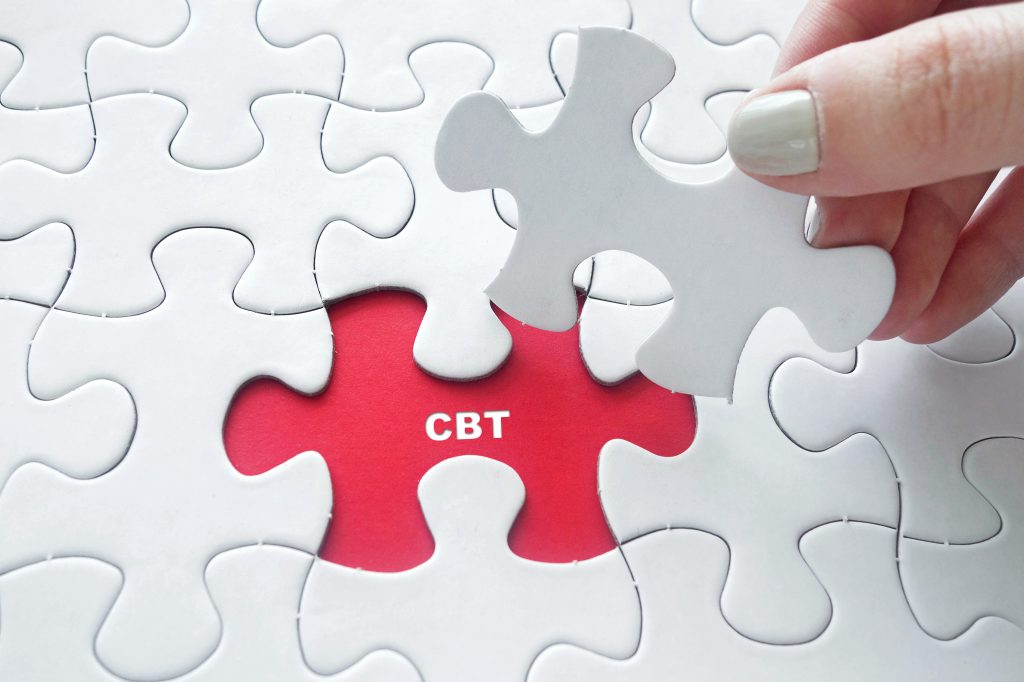
Post-traumatic stress disorder (PTSD) is an anxiety condition that causes symptoms such as nightmares, flashbacks, and guilt after experiencing a traumatic event. This can significantly impact one’s ability to function and engage in everyday life. PTSD also has a strong association with suicidality (suicidal thoughts or attempts; Brown et al., 2018; Nepon et al., 2010).
Psychological therapies for PTSD include Trauma-focused Cognitive Behavioural Therapy (CBT), which focuses on thoughts, feelings, and behaviours, and Eye Movement Desensitisation and Reprocessing (EMDR), which involves specific eye movements to aid in processing traumatic memories. Both interventions have been found to improve the symptoms of PTSD (Bisson et al., 2013). Antipsychotic medication is also suggested as an alternative to treatment to reduce delusions and hallucinations.
This blog and podcast with Prof Jonathan Bisson, which was published by the Mental Elf in 2019, is a good summary of the current (2019) picture for PTSD treatment.
NICE guidelines provide recommendations for treatment based on the best current evidence. Psychological therapies are recommended as the first line of treatment for PTSD, and antipsychotic medication is not advised unless service users do not respond well to psychological therapy. This does not come as a surprise, as the evidence base on its effectiveness has mixed findings (Miao et al., 2018). 56.4% of patients with PTSD have some aspect of suicidality, and when it comes to treating these patients, adhering to NICE guidelines is even more crucial (Suicide Amongst People With PTSD – PTSD UK, n.d.).
In this paper, Opie et al. (2022) aim to investigate the characteristics of patients with PTSD and suicidality and the treatment pathways they follow to further our understanding of suicide prevention in this clinical population.

PTSD can increase the risk of suicidal ideation or attempts. Do our services provide evidence-based treatment to people experiencing both?
Methods
745 PTSD patients were recruited from Camden and Islington NHS mental health services from 2009-2017. Data was gathered on the treatment received and the risk of suicidality.
Only patients with a main diagnosis of PTSD who had been referred by a health professional (as opposed to self-referred) were included in the study. Compared to the rest of London, patients at this service were disproportionately young (below 35 years old) and White. Sociodemographic factors that may have impacted results, such as age, ethnicity, and drug/alcohol misuse, were adjusted for in the statistical analysis. The authors used adjusted models to identify associations between suicidality, treatment received, and hospital admission.
Results
Out of 745 patients, 48 individuals were identified as reporting suicidality 6 months before or after a diagnosis of PTSD. Younger participants and participants experiencing drug or alcohol misuse had a higher probability of reporting suicidality. Over half of the patients with PTSD received therapy or were prescribed psychotropic medication – that is, any drug that affects behaviour, mood, thoughts, or perception. Moreover, 35% of patients with PTSD were prescribed medication targeting symptoms such as paranoia, hallucinations, or anxiety.
Patients with PTSD reporting suicidality were more likely to be prescribed medication and be referred for therapy than those with PTSD without suicidality. Lastly, patients with suicidality in the context of PTSD were over 2 times more likely to be admitted to a hospital or helped by a crisis resolution home team (a team of mental health professionals aiming to provide care in the patient’s own home).

Service users with PTSD and suicidality were more likely to be prescribed medication and referred for psychological therapy than those without suicidality.
Conclusions
This study provides evidence that PTSD patients with suicidality rarely received evidence-based treatment, as they were more likely to be prescribed medication, and therapy, and be admitted to hospital. The researchers remarked that:
This is particularly concerning given the weak evidence to support the use of psychotropic medication reducing the risk of repeat self-harm.

Suicidal PTSD patients are less likely to receive first-line treatment as recommended by national guidelines, and the reason remain unclear.
Strengths and limitations
The researchers acknowledge that the conclusions are speculative. Unfortunately, the reason behind this is that the analysed data was gathered by doctors to aid their patients’ treatment, not with the aim to conduct this particular study. Therefore, the authors couldn’t explore all potential explanations and had to rely on the provided information. This means that we do not know if patients were prescribed medication after previous unsuccessful therapy attempts if they received private therapy (which was not recorded), if medications were prescribed to treat co-occurring anxiety, or if guidelines were simply not adhered to. This limitation may have been outweighed by the benefits of access to such a large body of information on PTSD patients. However, the findings still manage to uncover a gap in our knowledge, which is important in the way service users with PTSD and comorbid suicidal thoughts and/or behaviours are supported by our mental health services.
Another limitation of the study is that suicidality was measured with a questionnaire given by professionals. Participant scores may have varied due to professionals’ subjective judgments. This questionnaire also limited the knowledge obtained, with no measurements of suicide attempt frequency, for example.
According to the CASP criteria, the research is limited in its methodology for several reasons. Although the study addressed a clearly focused question, the cohort recruited was limited to those who sought help and accessed secondary mental health services for PTSD. Thus, the findings may not be generalisable to the wider population of those with PTSD. Moreover, due to the missing data, the true effect of confounders was unable to be assessed. This leaves room to question whether any associations established were truly causal or due to chance.
The findings of this research are inconsistent with that of previous literature and contradict the current NICE guideline recommendations. Taking into account the analysis due to missing data and the recruitment methods of this study, the results of the study may not be entirely believable.

Data was retrieved from Camden and Islington NHS services, where there is a higher portion of White and younger people.
Implications for practice
Regardless of all limitations, the take-away message from this study is that the national recommendations for the treatment of PTSD are not always adhered to for patients reporting suicidal thoughts and behaviours. Further qualitative research on evidence-based practice, facilitators, and barriers among clinicians could help explain why.
It’s easy to assume that the implied recommendations for clinicians in this study are to ensure that NICE guidelines for treatment of PTSD are followed, in order to improve treatment outcomes and reduce the risk of suicide.

How can we better support clinicians to adhere to the NICE guidelines for the treatment of PTSD?
Statement of interests
None.
Contributors
Thanks to the UCL Mental Health MSc students who wrote this blog from Bisby B student group: Dimitris Bibonas, Charlotte Smith, Sylvie Smith and Enaya Syed.
UCL MSc in Mental Health Studies
This blog has been written by a group of students on the Clinical Mental Health Sciences MSc at University College London. A full list of blogs by UCL MSc students from can be found here, and you can follow the Mental Health Studies MSc team on Twitter.
We regularly publish blogs written by individual students or groups of students studying at universities that subscribe to the National Elf Service. Contact us if you’d like to find out more about how this could work for your university.
Links
Primary paper
Other references
Bentley, K. H., Franklin, J. C., Ribeiro, J. D., Kleiman, E. M., Fox, K. R., & Nock, M. K. (2016). Anxiety and its disorders as risk factors for suicidal thoughts and behaviors: A meta-analytic review. Clinical psychology review, 43, 30-46.
Bisson, J. I., Roberts, N. P., Andrew, M., Cooper, R., & Lewis, C. (2013). Psychological therapies for chronic post‐traumatic stress disorder (PTSD) in adults. Cochrane database of systematic reviews, (12).
Brown, L. A., Contractor, A., & Benhamou, K. (2018). Posttraumatic stress disorder clusters and suicidal ideation. Psychiatry research, 270, 238-245.
Hawton, K., Witt, K. G., Salisbury, T. L. T., Arensman, E., Gunnell, D., Hazell, P., … & van Heeringen, K. (2016). Pharmacological interventions for self-harm in adults. BJPsych Advances, 22(1), 2-2.
Miao, X. R., Chen, Q. B., Wei, K., Tao, K. M., & Lu, Z. J. (2018). Posttraumatic stress disorder: from diagnosis to prevention. Military Medical Research, 5(1), 1-7.
Nepon, J., Belik, S. L., Bolton, J., & Sareen, J. (2010). The relationship between anxiety disorders and suicide attempts: findings from the National Epidemiologic Survey on Alcohol and Related Conditions. Depression and anxiety, 27(9), 791-798.
Suicide amongst people with PTSD – PTSD UK. (n.d.). Last accessed: 1 July 2023.
Photo credits
- Photo by Conor Sexton on Unsplash
- Photo by Towfiqu barbhuiya on Unsplash
